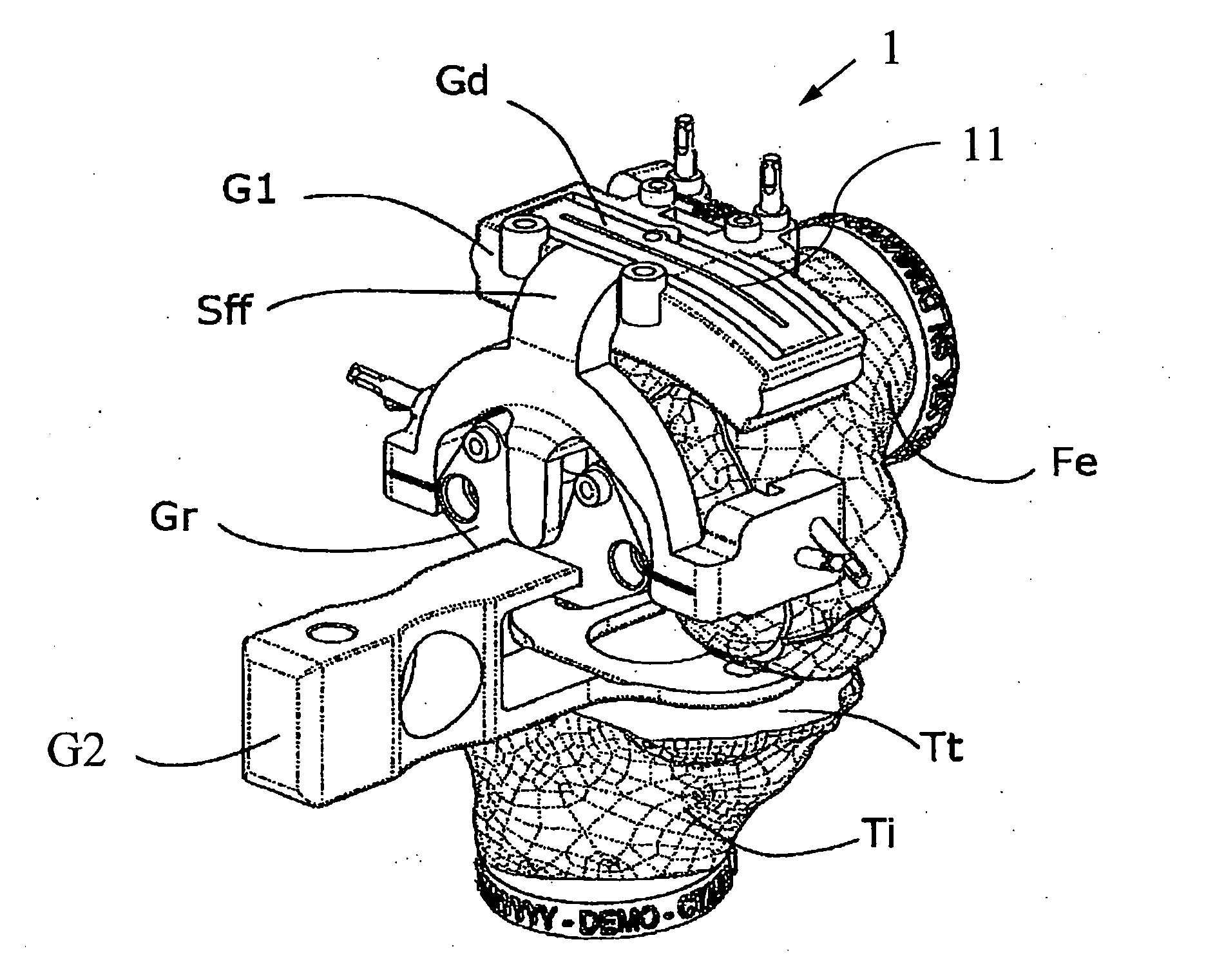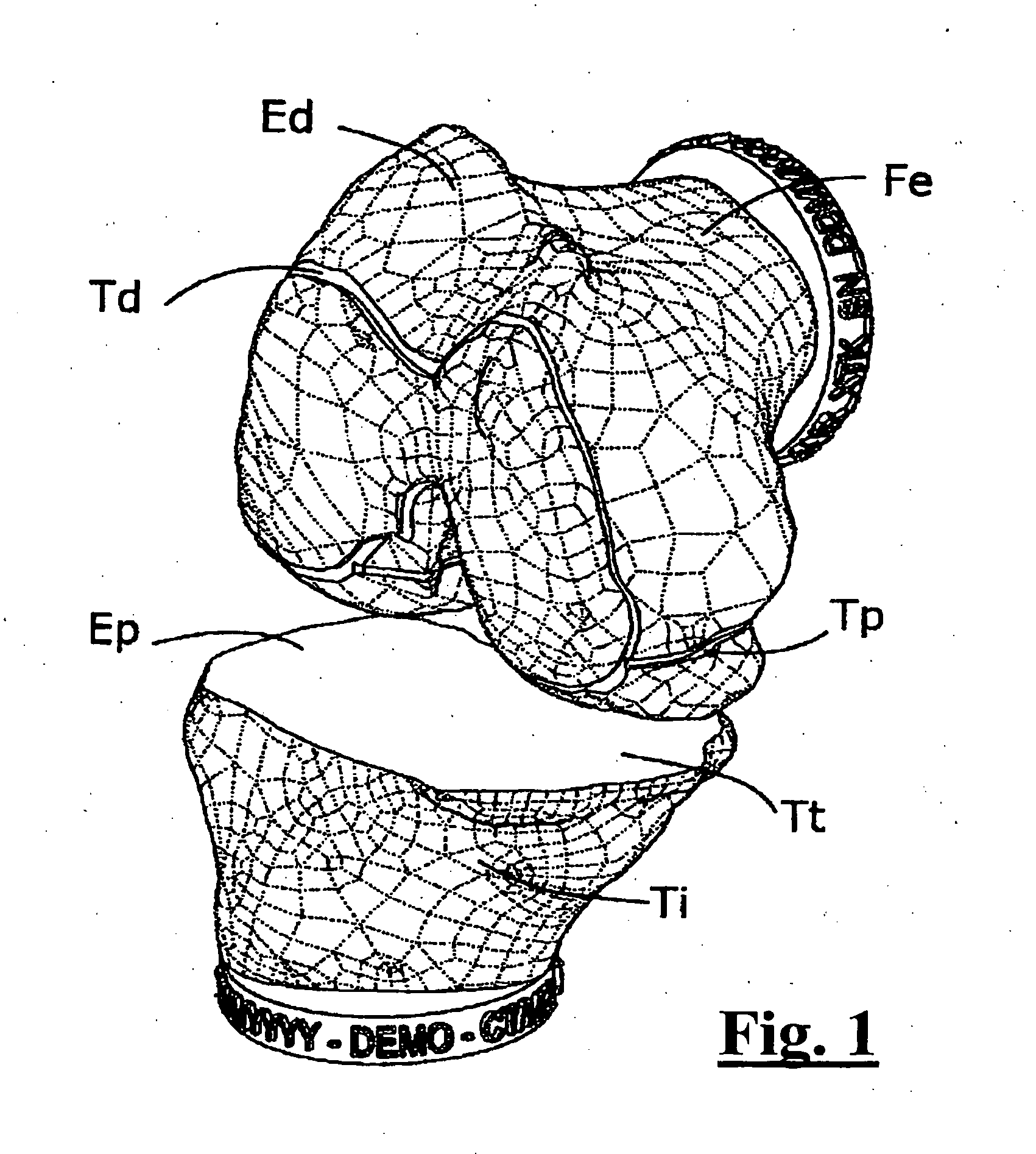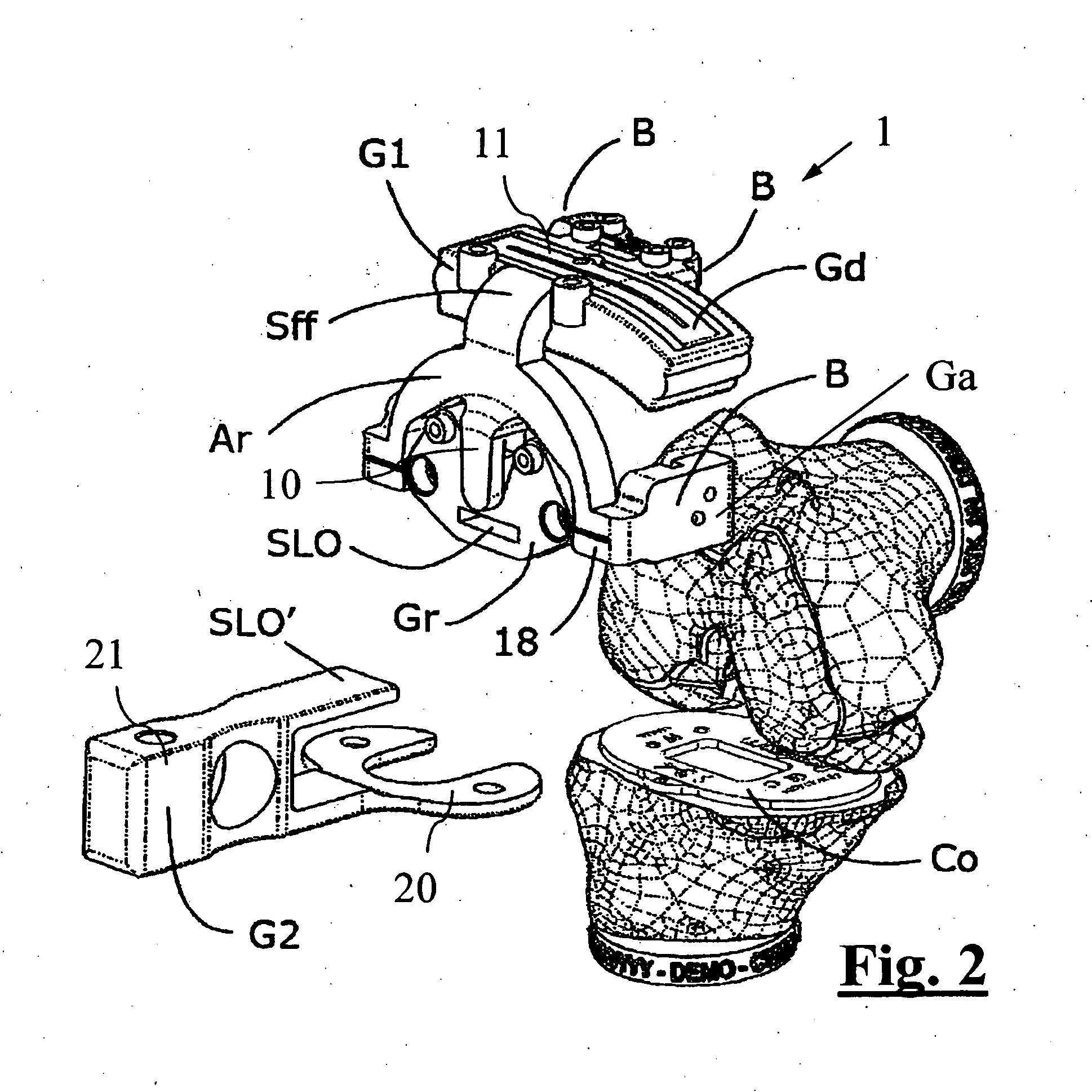Surgical guide for implanting a knee prosthesis
a surgical guide and knee technology, applied in the field of surgical guide for implanting a knee prosthesis, can solve the problems of insufficient bone visibility, interference of the cutting device with the rotula tendon, and inability to be free from drawbacks, and achieve the effect of high stability
- Summary
- Abstract
- Description
- Claims
- Application Information
AI Technical Summary
Benefits of technology
Problems solved by technology
Method used
Image
Examples
first embodiment
[0062]The structure of the first component G1′, however, is slightly modified compared to the first embodiment version.
[0063]In particular, the arch structure Ar whereon template Gr is hinged is here replaced by a attachment plate Pi. It should be noted that the attachment plate Pi has smaller dimensions than the arch structure Ar proposed in the previous version. The modification made advantageously allows the patient's leg to be extended during the operation; in the first embodiment version, the dimensions in side direction of the arch structure Ar prevent such operation.
[0064]The attachment plate Pi is connected by means of a connection Sff to a main attachment portion Gd. Connection Sff and attachment portion Gd are totally similar to those described above, except for the fact that the attachment portion Gd comprises a seventh fixing hole 25, skewed with respect to the six ones already provided in the first embodiment version.
second embodiment
[0065]On the contrary, the second embodiment version is not provided with the secondary attachment portions Ga, since it is provided with two distal fixing holes DFH directly onto the attachment plate Pi, which among the other things is designed for resting against the bony site defining the unique coupling of the first component G1′.
[0066]The attachment plate Pi, visible in FIG. 8 without the other elements associated thereto, has a substantially triangular shape. Distal fixing holes DFH are provided at the vertices of the base of such triangle; two coupling holes HTS for a shim are made a little above. In a central position at the height of the coupling holes HTS, substantially aligned with the longitudinal axis of femur Fe, there is provided a circular seat JRA wherein a button (not visible in the figures) of template Gr′ rotatably couples. Template Gr′ therefore is partly overlapped on plate Pi and rotatably constrained thereto.
[0067]Template Gr′ has a polygonal geometry, in par...
PUM
 Login to View More
Login to View More Abstract
Description
Claims
Application Information
 Login to View More
Login to View More - R&D
- Intellectual Property
- Life Sciences
- Materials
- Tech Scout
- Unparalleled Data Quality
- Higher Quality Content
- 60% Fewer Hallucinations
Browse by: Latest US Patents, China's latest patents, Technical Efficacy Thesaurus, Application Domain, Technology Topic, Popular Technical Reports.
© 2025 PatSnap. All rights reserved.Legal|Privacy policy|Modern Slavery Act Transparency Statement|Sitemap|About US| Contact US: help@patsnap.com



